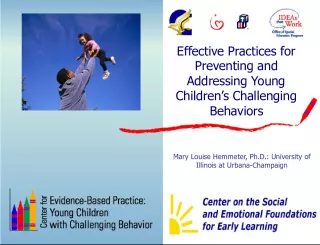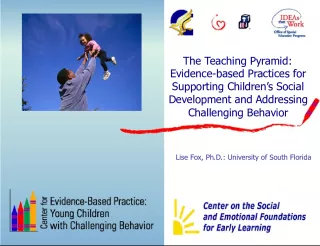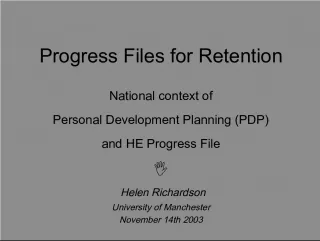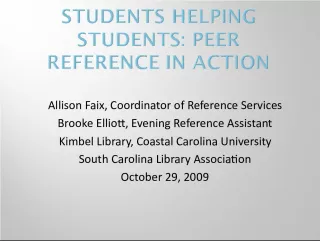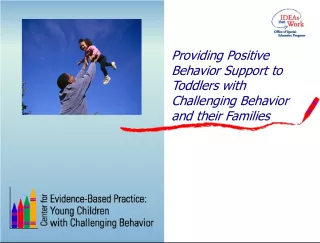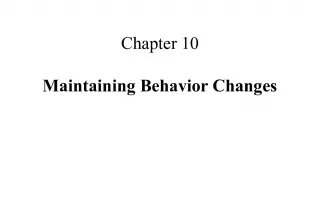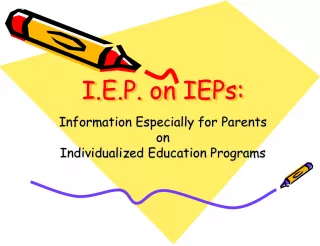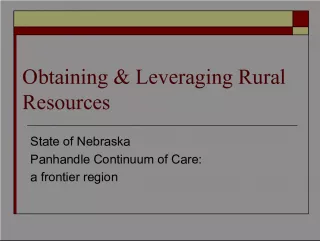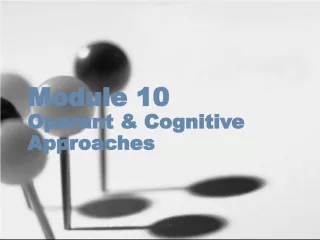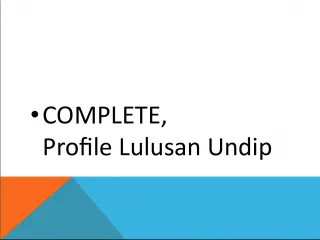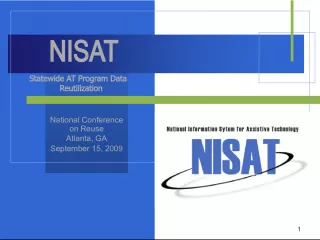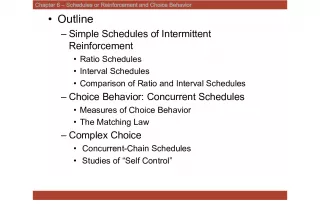Addressing Challenging Behavior in Higher Education Programs


Research findings and implementation issues discussed on www.challengingbehavior.org. Higher ed survey reveals faculty readiness for addressing challenging behavior; 4-year programs with special ed component reported most prepared. Primary barrier is lack of practicum sites.
- Uploaded on | 2 Views
-
 avery
avery
About Addressing Challenging Behavior in Higher Education Programs
PowerPoint presentation about 'Addressing Challenging Behavior in Higher Education Programs'. This presentation describes the topic on Research findings and implementation issues discussed on www.challengingbehavior.org. Higher ed survey reveals faculty readiness for addressing challenging behavior; 4-year programs with special ed component reported most prepared. Primary barrier is lack of practicum sites.. The key topics included in this slideshow are . Download this presentation absolutely free.
Presentation Transcript
1. Research Findings and Issues for Implementation, Policy and Scaling Up: Training & Supporting Personnel and Program Wide Implementation www.challengingbehavior.org Mary Louise Hemmeter Vanderbilt University
2. Higher Ed Survey 2- and 4- year faculty reported addressing the needs of children with ongoing challenging behavior - least prepared designing environments/prevention practices - most prepared 4-year faculty reported their graduates to be significantly more prepared then 2-year faculty reported their graduates to be 4-year programs that had a special ed component reported their graduates to be more prepared than programs without a sped component. Primary barrier - “not enough room in program” and access to “practicum sites”
3. Early Childhood Teacher Survey Of 10 topics, challenging behavior was the highest identified training need with social emotional development second 86% reported challenging behavior to be a training need 80% indicated that addressing challenging behavior negatively affects their job satisfaction 13% of respondents indicated a child had been asked to leave their program in the last 12 months because of behavior issues
4. Results 37% do not have access to behavior/mental health support person When support is available, 85% report it to be effective Resources/supports used Request someone to come to class in crisis Send child out of classroom
5. Child Care Teacher Interviews Results 10-42% of children in their classrooms have challenging behavior Most common support is someone removing child from their room Teachers are generally not aware of program policies and procedures related to behavior
6. Director Interviews Director Results Policies and procedures are in place but may not be well implemented or communicated Do not feel teachers are effective in implementing prevention/promotion practices More training was the most frequently reported need by directors for addressing challenging behavior Directors who were using a program wide approach were more likely to report that effective practices were being implemented
7. Training and TA Providers 87 providers in 9 states Do not feel prepared to support teachers around children with the most challenging behaviors and working with families Only 13% reported that organizational supports are in place
8. Summary Challenging behavior is a high priority training need Preservice Inservice Focus is on “more training” Behavior supports most likely to be used (removing child from class or adult coming to help in crisis) are not likely to lead to behavior change in children or increased competency in staff There is little evidence of a systematic approach to behavior support within early childhood settings
9. Creating Supportive Environments Creating Supportive Environments Positive Relationships with Children, Families, and Colleagues Positive Relationships with Children, Families, and Colleagues Social Emotional Teaching Strategies Social Emotional Teaching Strategies Individualized Interventions Individualized Interventions Program Wide Adoption Teacher Training/Implementation Administrative Supports Program Philosophy Well defined procedures Data Based Decision Making Partnerships with Families
10. • Range of service delivery systems • Training and expertise of teachers • Program philosophy, curriculum practices • Age and developmental level of children • Many early childhood programs do not have expertise in behavior support or resources to access this expertise • Lack of policies and procedures in place related to behavior support and guidance • Lack of systematic measure of effects Issues to Consider when Implementing Program Wide in EC Settings 10
11. The Teaching Pyramid: Promoting Social and Emotional Competence within Early Education and Child Care Environments Supportive Environments Building Positive Relationships Building Positive Relationships with Children and Families with Children and Families Social and Emotional Teaching Strategies Social and Emotional Teaching Strategies Individualized Interventions Individualized Interventions Children At-Risk Children with persistent challenges High quality early education Social Skills Curricula Positive Behavior Support All Children
12. Critical Elements of a Program Wide Model in EC Programs • Administrative buy-in and commitment • Buy-in from staff • Family involvement and buy-in • Developmentally appropriate and clearly articulated expectations for children’s social behavior • Intentional strategies for teaching social skills, supporting emotional competence, and acknowledging children’s behavior
13. Critical Elements of a Program Wide Model in EC Programs Strategies for addressing problem behavior Team based, individualized approach for addressing ongoing problem behavior Ongoing professional development Strategies for supporting teachers Process for monitoring outcomes
14. Preliminary Outcomes Improved staff satisfaction Decreased turnover Increase in overall program quality Clearly articulated and implemented policies and procedures More intentional teaching and purposeful approaches to supporting emotional development Elimination of “time-out” Less reliance on “outside”experts Stronger collaboration with mental health providers
15. What Makes it Work? A champion Administrative leadership Ongoing support for those working directly with children and families Clearly articulated policies and procedures related to behavior Commitment to long term process - systems change Collaboration between ECE and mental health/behavior consultants
